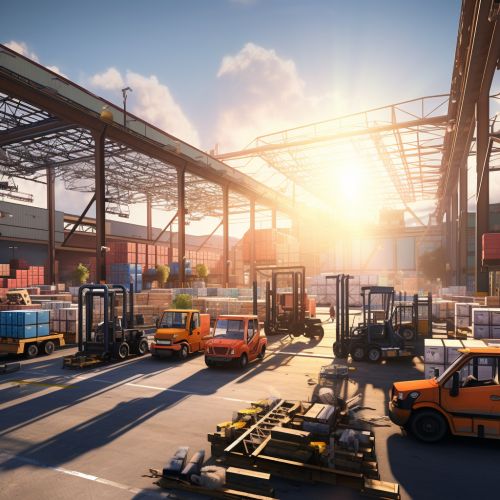Distribution System
Introduction
A distribution system is a vital part of the supply chain process, responsible for the delivery of goods and services from the producer to the end consumer. It involves a series of activities including transportation, warehousing, inventory control, and order processing. The efficiency of a distribution system can significantly impact the overall performance of a business, affecting customer satisfaction, operational costs, and profitability.


Components of a Distribution System
A distribution system comprises several key components, each playing a crucial role in ensuring the smooth flow of goods and services.
Transportation
Transportation is the movement of goods from one location to another. It involves the selection of the most efficient and cost-effective mode of transport, such as road, rail, air, or sea. The choice of transportation mode depends on factors such as the nature of the goods, distance, cost, and delivery time.
Warehousing
Warehousing involves the storage of goods until they are needed for distribution. Warehouses provide a central location for receiving, storing, and distributing products. They also offer services such as order fulfillment, cross-docking, and inventory management.
Inventory Control
Inventory control is the process of managing the quantity of stock held in a warehouse. It involves tracking inventory levels, sales, orders, and deliveries to ensure that there is sufficient stock to meet customer demand without excessive overstocking.
Order Processing
Order processing is the sequence of steps from the time an order is placed by a customer until it is delivered. It includes order receipt, picking, packing, shipping, and delivery. Efficient order processing is crucial for customer satisfaction and retention.
Types of Distribution Systems
Distribution systems can be categorized into two main types: direct and indirect distribution systems.
Direct Distribution
In a direct distribution system, the producer sells directly to the consumer without the involvement of intermediaries. This system is often used by manufacturers who sell large quantities of goods, such as automobile manufacturers.
Indirect Distribution
In an indirect distribution system, intermediaries such as wholesalers, distributors, and retailers are involved in the distribution of goods from the producer to the consumer. This system is commonly used in the retail industry.
Importance of a Distribution System
A well-designed and efficient distribution system offers numerous benefits to both businesses and consumers.
For Businesses
For businesses, a robust distribution system can lead to cost savings, improved customer service, increased market reach, and competitive advantage. It also enables businesses to manage demand fluctuations and ensure timely delivery of products.
For Consumers
For consumers, a good distribution system ensures product availability, reduces waiting time, and offers a wide range of products. It also contributes to customer satisfaction by providing timely and accurate deliveries.
Challenges in Distribution Systems
Despite their importance, distribution systems face several challenges that can impact their efficiency and effectiveness.
Logistics and Supply Chain Complexity
With the increasing globalization of business, logistics and supply chain complexity has increased. This includes managing multiple suppliers, diverse product lines, and international shipping and customs procedures.
Technological Changes
Rapid technological changes require distribution systems to constantly adapt and innovate. This includes implementing new technologies for inventory management, order processing, and transportation.
Environmental Concerns
Environmental concerns are increasingly influencing distribution strategies. Businesses are under pressure to reduce their carbon footprint, leading to the adoption of green logistics and sustainable distribution practices.
Conclusion
A distribution system is a critical component of the supply chain, ensuring the efficient and timely delivery of goods from producers to consumers. Despite the challenges, businesses are continually seeking ways to optimize their distribution systems to improve efficiency, reduce costs, and enhance customer satisfaction.
